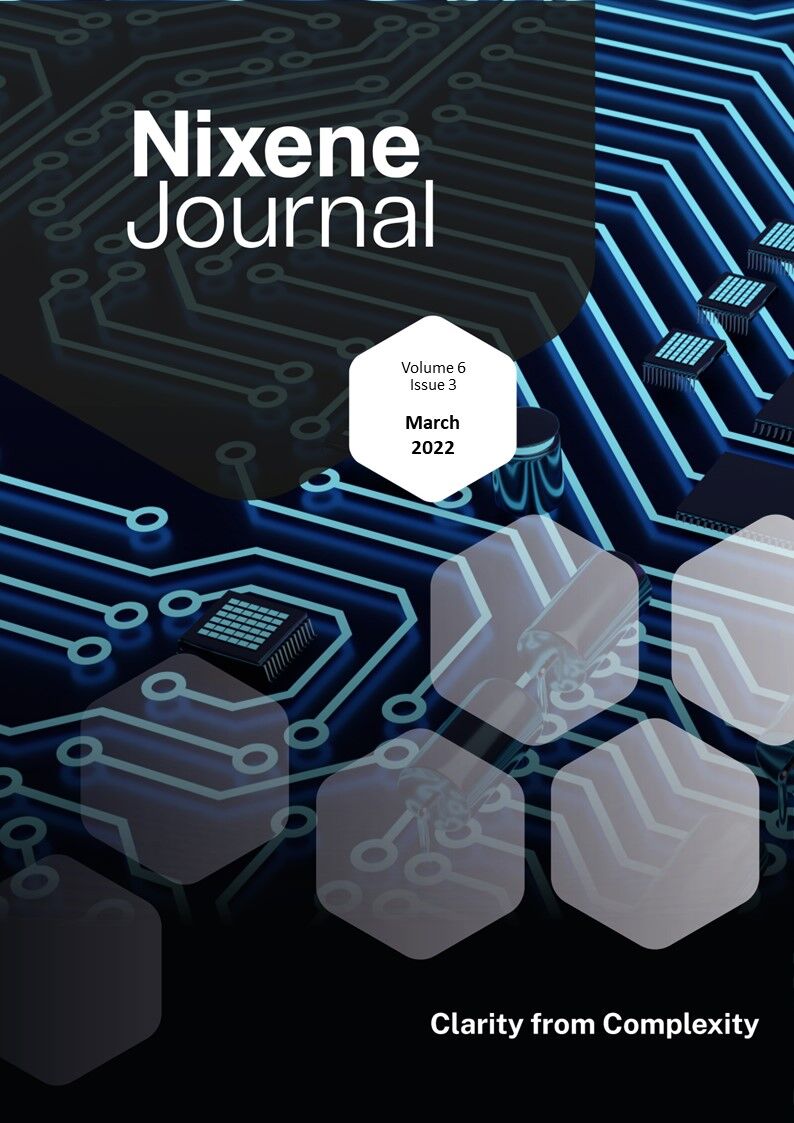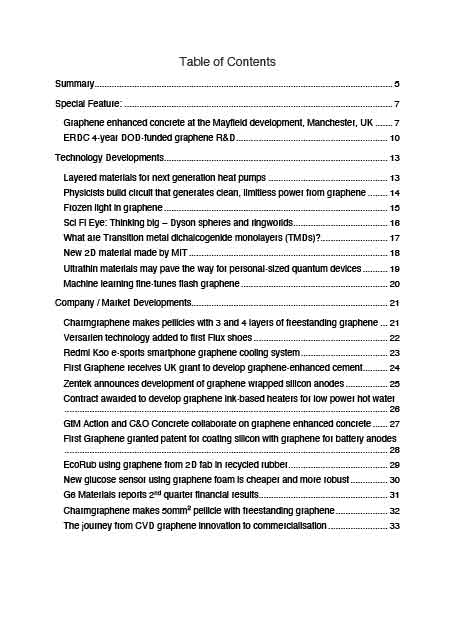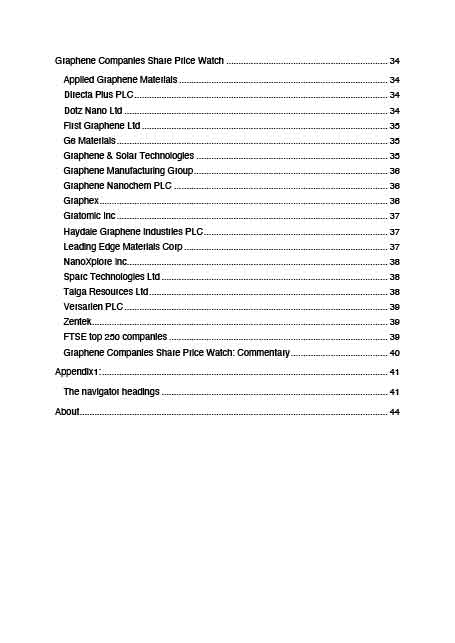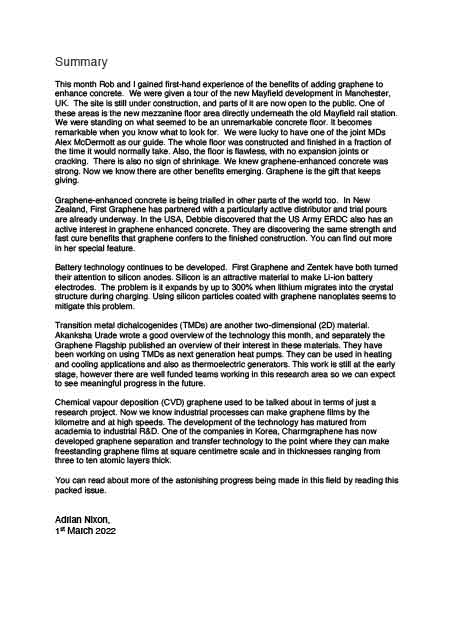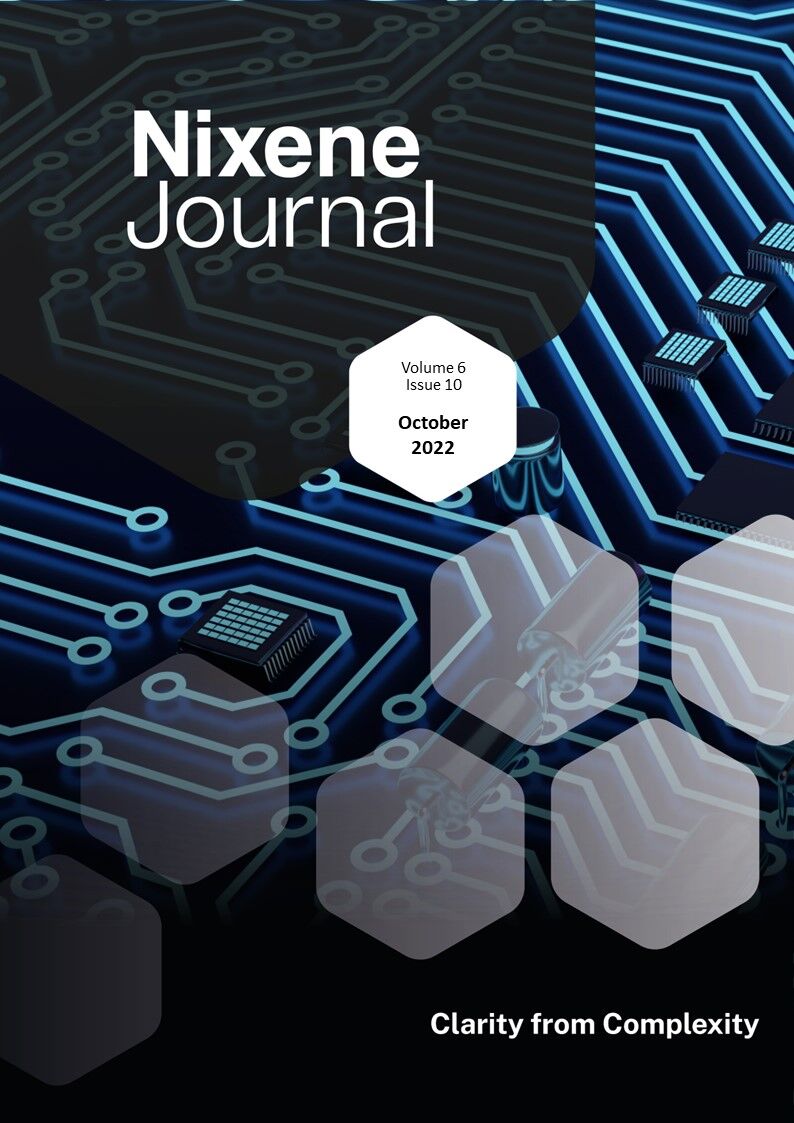Description
This month Rob and I gained first-hand experience of the benefits of adding graphene to enhance concrete. We were given a tour of the new Mayfield development in Manchester, UK. The site is still under construction, and parts of it are now open to the public. One of these areas is the new mezzanine floor area directly underneath the old Mayfield rail station. We were standing on what seemed to be an unremarkable concrete floor. It becomes remarkable when you know what to look for. We were lucky to have one of the joint MDs Alex McDermott as our guide. The whole floor was constructed and finished in a fraction of the time it would normally take. Also, the floor is flawless, with no expansion joints or cracking. There is also no sign of shrinkage. We knew graphene-enhanced concrete was strong. Now we know there are other benefits emerging. Graphene is the gift that keeps giving.
Graphene-enhanced concrete is being trialled in other parts of the world too. In New Zealand, First Graphene has partnered with a particularly active distributor and trial pours are already underway. In the USA, Debbie discovered that the US Army ERDC also has an active interest in graphene enhanced concrete. They are discovering the same strength and fast cure benefits that graphene confers to the finished construction. You can find out more in her special feature.
Battery technology continues to be developed. First Graphene and Zentek have both turned their attention to silicon anodes. Silicon is an attractive material to make Li-ion battery electrodes. The problem is it expands by up to 300% when lithium migrates into the crystal structure during charging. Using silicon particles coated with graphene nanoplates seems to mitigate this problem.
Transition metal dichalcogenides (TMDs) are another two-dimensional (2D) material. Akanksha Urade wrote a good overview of the technology this month, and separately the Graphene Flagship published an overview of their interest in these materials. They have been working on using TMDs as next generation heat pumps. They can be used in heating and cooling applications and also as thermoelectric generators. This work is still at the early stage, however there are well funded teams working in this research area so we can expect to see meaningful progress in the future.
Chemical vapour deposition (CVD) graphene used to be talked about in terms of just a research project. Now we know industrial processes can make graphene films by the kilometre and at high speeds. The development of the technology has matured from academia to industrial R&D. One of the companies in Korea, Charmgraphene has now developed graphene separation and transfer technology to the point where they can make freestanding graphene films at square centimetre scale and in thicknesses ranging from three to ten atomic layers thick.
You can read about more of the astonishing progress being made in this field by reading this packed issue.
Adrian Nixon,
1st March 2022

